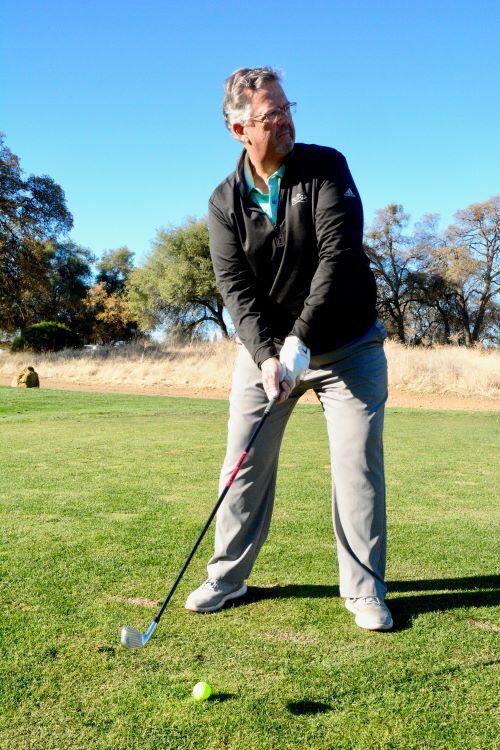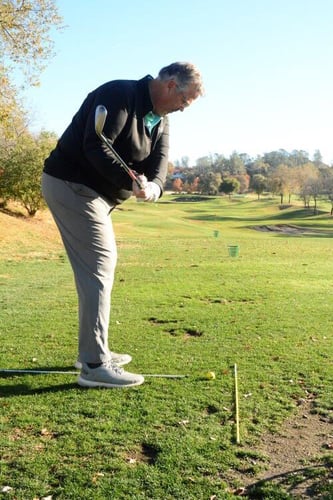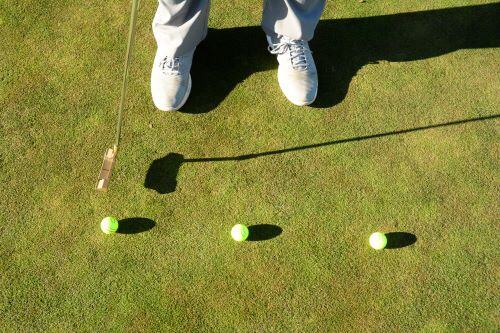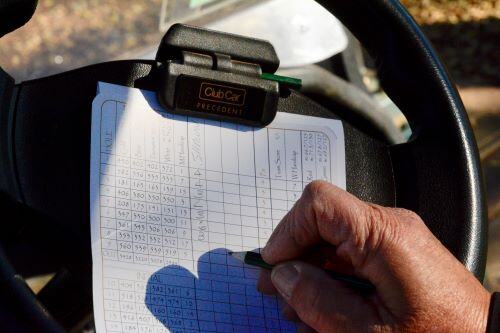.png)
BY SHAWN KELLY, PGA
First Appeared in Winter 2021 Golf Magazine
I’ve been fortunate enough to be Northern California PGA Player of the Year six times, so I try to relate everything I teach to “playing” and not “swinging.” Most people, I feel, lack a good pre-shot routine, and don’t know how to process all the information they have to properly execute a shot. To me, that’s an area where most of my better players need work. They often think it’s a ‘golf swing’ thing, and it’s not. They need to trust what they’ve got and go play the game. I feel strongly that a good player who knows his fundamentals can build up his confidence through a better pre-shot routine. I competed through college, but I didn’t learn how to play the game, honestly, until I became a pro and met a sports psychologist and we talked about routines and that kind of stuff. That’s when I took off. It had nothing to do with how I swung a club. When I was at San Jose State, I once four-putted the 18th hole to lose a tournament by a shot to Duffy Waldorf. I always say that was the day that I learned to play golf. I couldn’t handle the emotions and the pressure, and I knew there had to be an answer, a better way to deal with that. When I started learning more about the mental side of golf, and built a consistent pre-shot process, is when I started having more success in this game.
GET A GRIP!
In my research, 85% of the golfers who come to me for help lack the basic fundamentals to be a good golfer. There’s no good way to swing the club properly with bad fundamentals. Typically, I see players with weak grips. The target-side hand is typically weak (top-hand knuckles rolled toward target). They grip it too tight and don ’ t really “balance” the club in the hand. One tip is to hold th e club out in front of your chest and find out where th e club is balanced. Feel it. If you have the club in your hand correctly, y o u should be able to place it on your shoulder and let it go. It should stay toe-dropped balanced. I can let it go with all but the tip of my right forefinger. A “balanced” grip. To get your hands working, you swing it back and through, and when you finish, you should be able to lay that club back on your shoulder and let it go again. It should stay balanced; it shouldn’t be twisted. Once you know how to balance your grip, your body will start making a golf swing. It’s amazing.
BUILD AND PRACTICE YOUR PRE-SHOT
I work on my pre-shot routine as much as another player might work on pitching, or putting. Most people, when they’re swinging a golf club, are thinking way too much about “how.” I’ve built a three-step process where I’m not thinking about the “how.” I start with detailed visualization of the shot, standing behind the ball and watching the shot fly in real time. If my eye drifts toward a bunker, or water, I need to reset to find a more positive image. Secondly, I need to know basic fundamentals to adapt to the shot at hand (sidehill lie, downhill lie, etc.). Few players adapt their fundamentals to the situation. If a ball isn’t sitting on level ground, for instance, it’s time to move the ball further back in your stance, compensating for less weight transfer. And finally, stay target-oriented. Focus on your target. One final look, and when the eyes return to the golf ball, it’s time to “go.” Think about it, a basketball player looks at the rim when he shoots, not at the ball. If you’re staring down at the golf ball too long, you’re thinking about “how” to swing the golf club. Stay target-oriented. I’m big on that.
Short Game Distance Control
A player needs to learn to control the ball from five distances: I use 10, 25, 50, 75 and 100 yards. If you can’t control those five distances in your game, you’ll never score consistently. The narrower the stance, the shorter the swing. The swing doesn’t change. I try to keep the same rhythm with every swing, every shot. With that rhythm, your consistency will come with your fundamental setup, or with the club that you choose. If I want to go 10 yards, I need to be narrow, with no wrists in my swing. If I have a shot that requires a half-swing, or quarter-swing, I need to know how to set up. Every club from 100 yards in (pitch, sand, lob) has three distances: my quarter-, my half- and my full-swing. I’m looking to control my trajectory and my spin. If I don’t need spin, I don’t want to take a full swing; if I want to “roll” it, I use a quarter-swing. I’d much rather use half-swings with my wedges than full swings. I’ll throw a basket down at 10 yards and one at 25 yards and start pitching balls. When I lose my rhythm, that’s how I get it back, just pitching balls 25 yards.
THE RHYTHM OF PUTTING
In putting, rhythm is “equalness.” The putter needs to swing equal back and equal through. I put three balls on the ground, equal distance apart in a straight line, and I set up to the middle ball and swing the putter back and forth. If I’m going (back) ball to (front) ball, I’m in rhythm. I also have a rhythm stick with some colors on it. It’s good for my aim. To keep from peeking too early and letting your eyes wander peripherally to the hole during shorter putts, try focusing on a single dimple, or look at the very front of the golf ball. Right before my stroke, I envision myself with a straw in my mouth, breathing slowly and calmly through it. When the “air” reaches the ball, I'm ready. I find this relaxation technique helps remove tension and promotes soft grip pressure. Once you find a proper grip pressure, you need to maintain it the entire stroke. The rhythm of your swing is 100% dictated by the pressure of your hands. I like the tube of toothpaste example, squeezing just hard enough to get some paste out of the top. On a scale of 1 to 10, you’re maybe a 1, and you keep that pressure through the stroke. Too many people “squeeze” the grip when putting.
SHORT MEMORY GOES A LONG WAY
Ben Hogan used to say that golf is not a game of good shots, but a game of bad ones. His point was most of us hit far more of the latter. The key is not letting one bad swing, or one bad shot, compound into more of the same. Here’s the reality: You’re going to hit bad shots, you’re going to have bad breaks, you’re going to make mistakes at the wrong time. We let holes bother us, shots bother us, and you have to be able to let those go. You have to let bad rounds go. It’s easier said than done. You can’t play this game and let the bad ones effect you, because you’ll never have enough “good” ones to be successful. You have to identify that process of trusting that everything will be fine if you focus on one shot at a time. I’ll analyze what I just did wrong, but when I step up to the next tee box, it’s back to my pre-shot routine. It’s not about worrying about the last shot anymore. It’s about focusing on this one. Once I start going through my visualization, it slows me down, and I’m ready to execute. Most of the time in my rounds, you won’t know if I’m under par or over par, I hope. I’m staying in my “even keel.” That’s the goal.